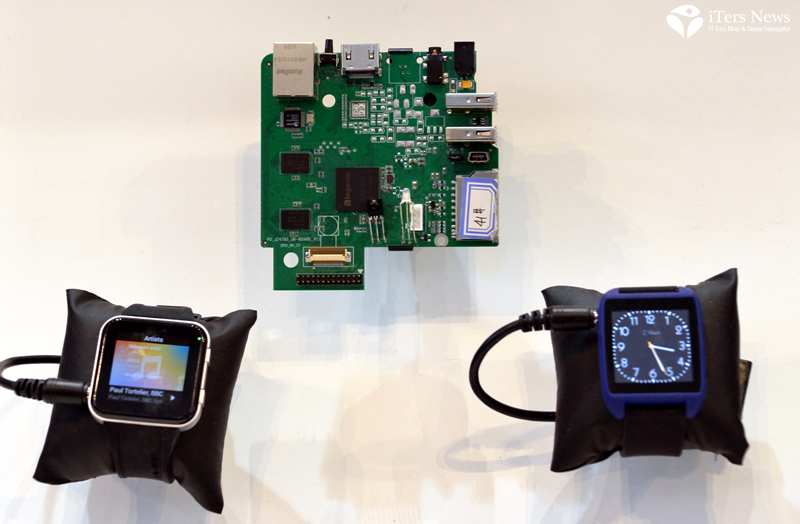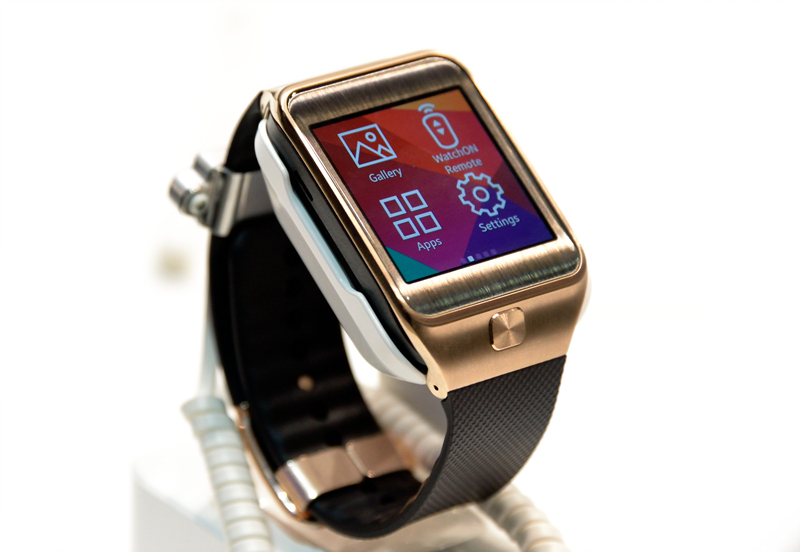(iTers News) -Years after it has stayed buried underneath the car dash boards and factory floors of the industrial M2M infrastructure world, the so-called embedded system comes bursting out of the underground into broad daylights of consumer markets.
Unlike desktop and laptop computing devices that are mostly being built around a full-blown Windows OS and CPU platform, for example, smart phones have been running on an optimized, duty-specific CPU and Android OS platform to make the best use of CPU power on as low power budget as possible.
That’s where the beauty of the embedded system comes in.
As IoT, or Internet of Things devices like wearable smart watches and smart glasses are rapidly emerging as Nest Big Thing, system developers are digging deeper into the embedded world to find more optimal embedded system to build a lot power-thriftier and more performance-proof smart wearable computing devices.
Cases in point are Samsung Electronics’ Gear 2 smart watch and Gear Fit smart wristband. Unlike its first generation of Galaxy Gear smart watch that runs on a full-fledged Android OS and 800MHz CPU platform, the Gear 2 comes with a more optimized OS platform.
Powered by a 1 GHz CPU, the Gear 2 smart watch runs on a specifically optimized Tizen OS for wearable devices.
Although Samsung didn’t specify the kernel size of the optimized Tizen OS, it is a sort of embedded OS software that is specifically stripped down and optimized for clearly –defined workloads to make the most use of its 1.0GHz CPU consuming the least of power budget.
The upshot was its far longer battery life, compared with that of the Galaxy Gear that runs just a couple of hours before it gets recharged. Operating just on a 300mAH Li-ion battery, the Gear 2 is known to outlive 2 to 3 days once charged, because its CPU and OS was well optimized to power up such light-duty workloads as video and music playback and heart rate checking pedometer for health care and fitness without compromising its battery power.
The 1.0GHz CPU is a variation of ARM Cortex A series processor cores that are already well optimized for mainstream smart phones. The variation gets optimized further in performance to get the Gear’s built-in video and music playback functionality up and running with the least power budget.
The Gear 2 comes in a LCD screen boasting 12mega pixel CMOS camera.
Samsung also has built its 1.84-inch wristband type “Gear Fit’ around its well-optimized CPU and OS platform. Coming into a full-HD curved AMOLED, the ‘Gear Fit’ runs on Samsung’s own indigenous embedded OS software, but Samsung declined again to elaborate on its kernel type and size. The Gear Fit is powered by ARM processor core, but no further information is available on it.
The Gear Fit is a sort of a health care, or fitness aid gear. Working in sync with its host Galaxy Series of smart phones, the Gear Fit keeps consumers updated on recent activities and instant notifications such as incoming calls, emails, SMS, alarm, S-planner, 3rd party apps. It comes in changeable straps in black, orange and mocha grey.
Qualcomm's Toq; More practical 
Qualcomm’s approach is more practical. Its Toq smart watch is a perfect reference design not only of how to build wearable smart devices, but also of what they are supposed to do.
Running on a power-thrifty 200MHz ARM Cortex M3 processor core and embedded real time OS Thread-X platform, the Toq can outlive several days of operations, working as a perfect companion device for a smartphone and a tablet PC. It comes housed in a 1.5-inch ambient light-lit Mirasol display.
It does very simple and basic things; receive incoming calls, show text messages, and bring up emails Consumers can also see stock news and check your schedule. As it comes with no music player, nor a camera, the M3 core and X-Thread embedded OS is enough to get it up and running.
Built with its AllJoyn technology, it can also work as a remote control hub for other IoTs using a Bluetooth personal area network.
Power-efficient, but performance-centric MIPS core is back in the embedded world. Imagination Technologies of the U.K. logged a design win of its MIPS core for SpeedUp Co., Ltd. to power a 1.54-inch multi-touch smart watch.
The SpeedUp smart watch runs on Android 4.4.2 KitKat OS, but due to the highly low power MIPS core, it runs for 4 and half a hours in extreme usage cases like screen-on and Bluetooth connections running. In the normal usage cases, it outlive 48 hours.
It is no more than a companion device that works in sync with a smart phone to complement the phone operations. It displays time, date and weather information, and incorporates a push notification feature to enable users of all Android and iOS devices to stay connected to their devices.
Users can be notified about incoming calls, chats like whatsapp and BBM, social media messages, email, alarm, calendar, and weather information. Its built-in camera remote control features enables it take remote snapshots for Android or iOS devices with full screen camera preview.
Its “Find My Device” feature also enables users to easily locate a misplaced smart phone or tablet by sending a notification to remotely activate vibrations and/or ringing.
It doubles a pedometer to automatically track fitness status such as step count, distance calculation, and consumption of calories, enabling users to enjoy the morning run, stay connected and analyze their performance through daily, weekly and monthly statistics.
The SpeedUp SmartWatch also can be used to remotely control music as well as for voice recording.
It sells for just less than US$80
‘We are most targeting this market (for wearable devices) with MIPS’s M-class and I-class. We mostly expect wearable devices to be built around M and I processors. I really like to see the approaches with multiple M-class processor plus I-classes, depending on what jobs wearables are doing,” said David Harold, vice president of corporate communications team with Imagination Technologies plc.
MIPS M-class core is a sort of MCU level cores, while I-Class is a highly integrated embedded cores. Imagination is drumming up MIPS P-Class core as an engine of applications processors.
(Photos and Videos by JH Bae / MWC2014 / Barcelona)




